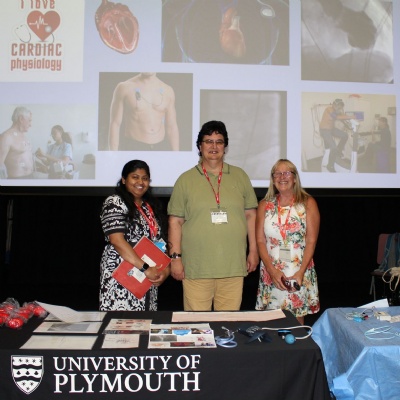Plymouth University Cardiac (Heart) Physiologists Inspire Year 9 and 10 Students

Scott College recently welcomed three exceptional cardiac (heart) physiologists from Plymouth University, who shared their expertise about the physiology of the heart with our Year 9 and 10 students. These professionals perform essential cardiac tests such as echocardiograms, ECGs, Holter monitors, blood pressure measurements, and tilt-table tests. They also assist in catheter lab procedures, including angiograms, angioplasties, and the implantation of pacemakers or ICDs.
Paugalini Balakrishnan, recently qualified and heading off for her first full-time position at St Thomas' Hospital in London, shared her journey over the past four years. She expressed her passion for the course, particularly the hands-on experience gained during a 40-week placement with cardiac physiologist teams and the public.
Cherith Wood, a Chief Cardiac Physiologist and Clinical Lecturer, spoke about her diverse roles, from mentoring students to participating in life-saving procedures like pacemaker implantations. She brought in equipment for students to examine, some of which had been used in actual life-saving procedures. Cherith also explained how to read ECGs, spot abnormalities, and provide appropriate care.
Nicola King, a lecturer at Plymouth University, outlined the course structure and the academic requirements for admission. She highlighted key study areas such as biomedical investigation, human anatomy, cardiovascular respiratory physiology, electrocardiography, and clinical cardiac science. Nicola also emphasised the course's focus on the importance of medication and how to tailor it to individual conditions.
Year 10 tutors, Miss Klosowski and Miss Reid, commended the session, saying, "It is so lovely to have an interactive session that is very informative and hands-on, with the opportunity to look at and hold equipment."
During the session, Year 9 student Grace asked, "Does it hurt when a pacemaker is fitted?" Cherith explained, "The procedure is performed under local anaesthetic, so the person remains awake. A small pocket is made above the ribs on the left side where the device is placed. The individual may feel a lump under their skin where they can touch and see the pacemaker. There may be some soreness afterward, but the body heals naturally."
Year 10 student Nolan asked, "How often do pacemakers need to be replaced?" Cherith responded, "Pacemakers typically have a battery life of 15 years. Some may never need replacing due to their long-lasting energy."
This engaging visit provided students with valuable insights into the field of cardiac physiology and inspired many to consider careers in this vital healthcare area.


